A Symphony of Colors – The Otagi Nenbutsu-ji Temple and A Thousand Rakan Statues
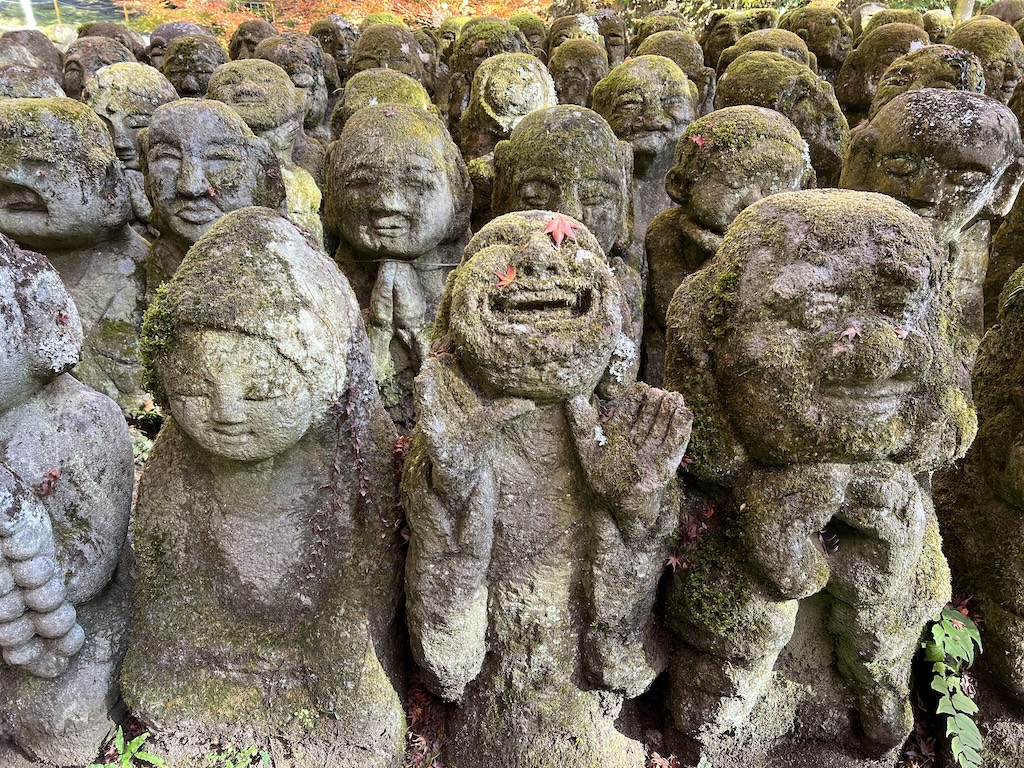
More than a thousand stone rakan statues populate the temple ground at the Otagi Nenbutsu-ji Temple. Being moss-covered, the stone statues create an ambience that is faintly eerie, but the unique facial expressions on the statues convey a quirky sense of comical cheerfulness at once.
The admissions fee to the Otagi Nenbutsu-ji Temple is JPY ¥300.
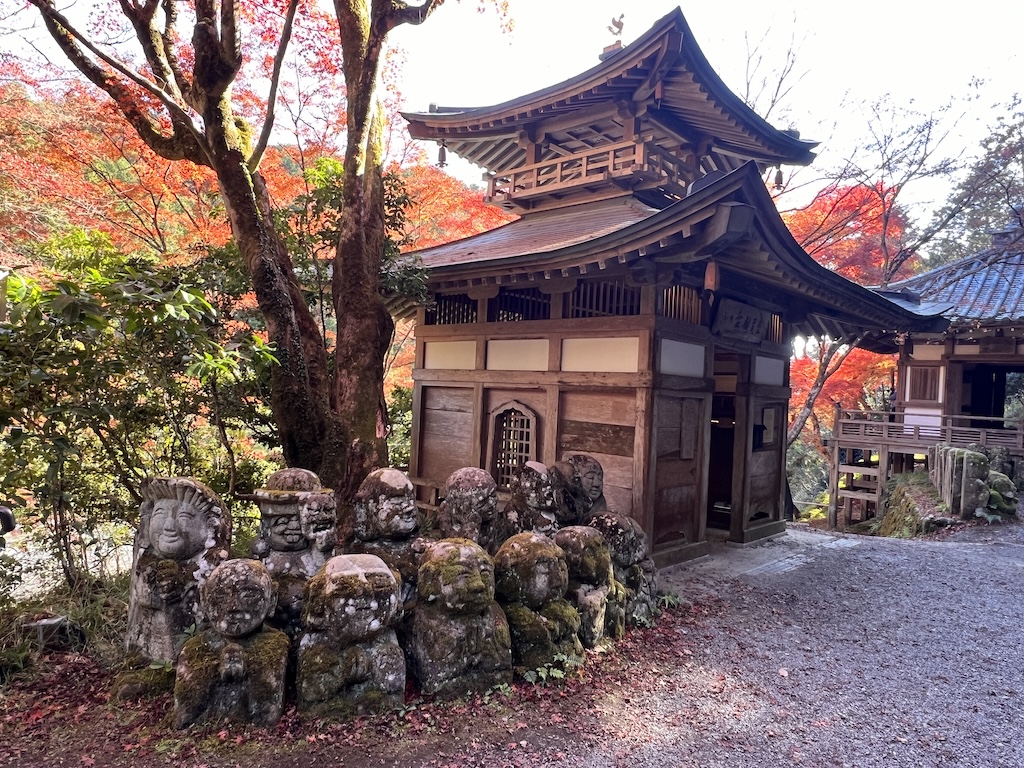
A Brief History of Otagi Nenbutsu-ji Temple
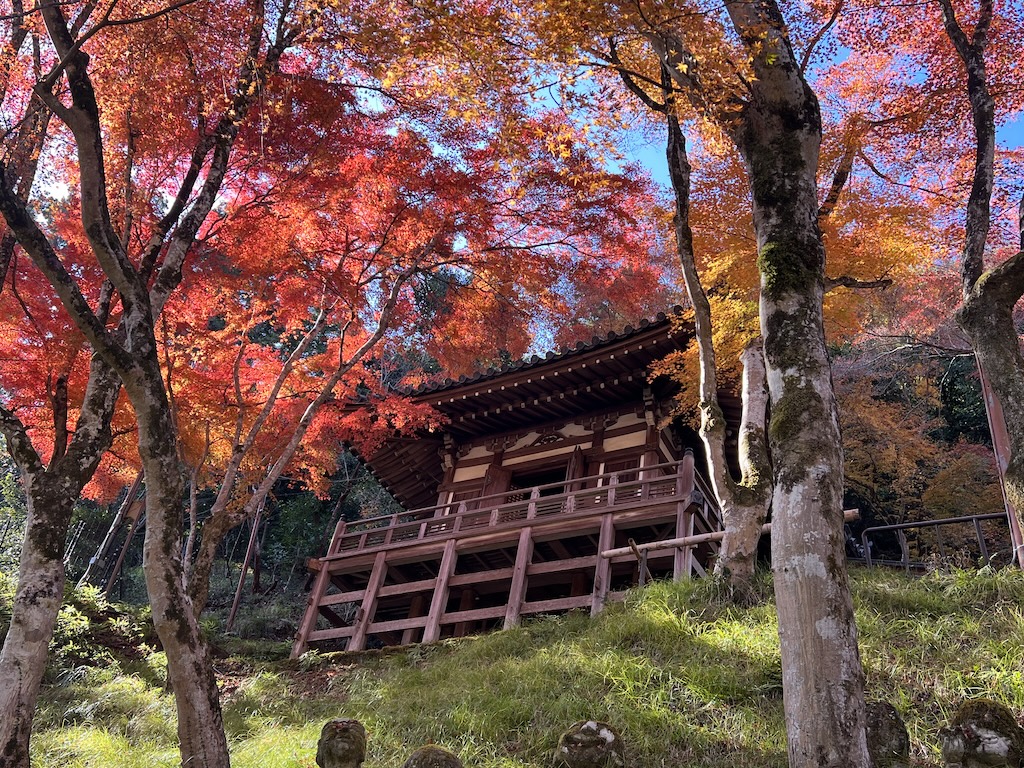
The very original of the Otagi Nenbutsu-ji Temple was established near the Gion District in the Higashiyama area by the order of Emperor Shotoku in 766 A.D. That temple was destroyed by the flood of the Kamogawa River during the early Heian period. Thus began the seemingly “bad luck” that struck this temple throughout its history.
The temple underwent reconstruction with leadership by chief monk Senkan Naigu, who carved the Yalu-yoke Senju Kannon that was the resident deity around the 10th century or so. During the 13th century, the civil war destroyed the temple again.
By the 20th century, the temple has come to stand for resilience. In those long years past, the temple fell victim to fires and neglect. There were only three structures still standing in the temple, namely the main hall, the Jizo Hall, and the temple gate. In 1922, there was effort to move these structures to the current site in Arashiyama, and the temple started anew. Yet again, in the 1950s, a typhoon damaged the temple.
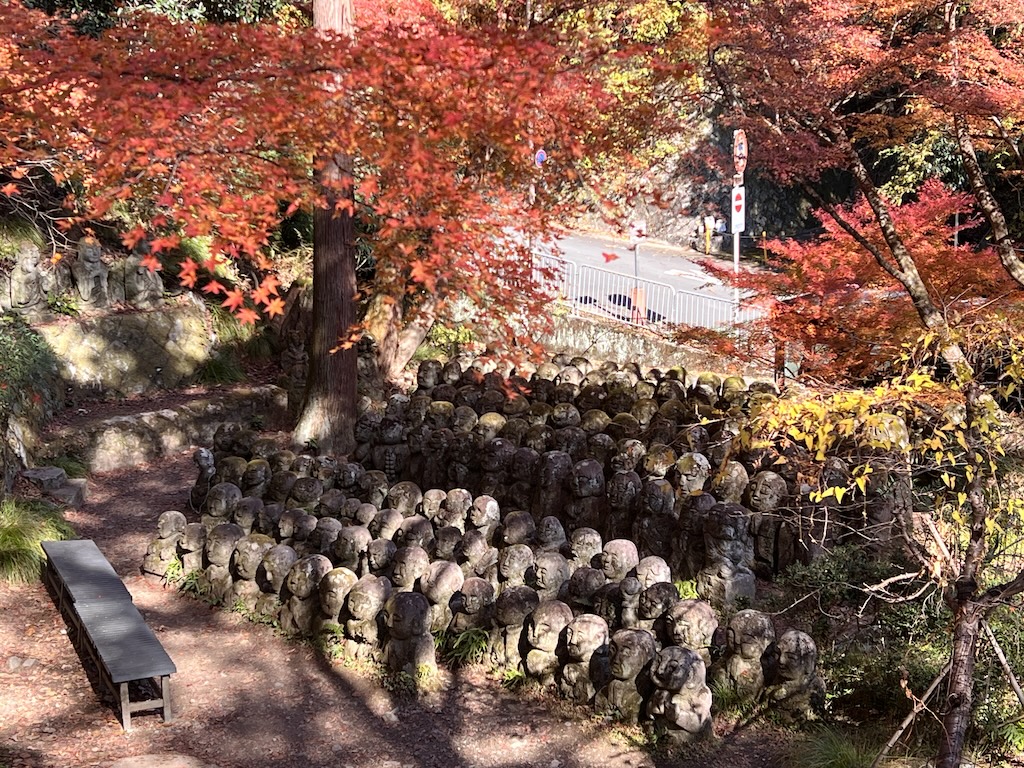
Finally, in 1981, the temple underwent a major restoration led by Kocho Nishimura. He was a craftsman for Buddhist statues before becoming a monk himself. The restoration effort took a good ten years, during which time structures were taken apart, rebuilt, renovated and restored. This was also the time needed for the temple to offer sculpting pilgrimage for the followers. The army of 1,200 rakan statuettes was the work of many followers over this decade of time in the 1980s. Kocho Nishimura’s innovative initiative to combine art and religion was very much reflective of his own journey of faith.
Rakans are the followers of Buddha. The statuettes in the temple were created by the common people. In this creative process, the followers of Buddha essentially invested in their artwork some of their own humanity. Surely, there were many statuettes wearing somber expressions, but some were reading, some were marveling, and some were laughing as well. In the back of these statuettes the sculptor carved his or her own names.
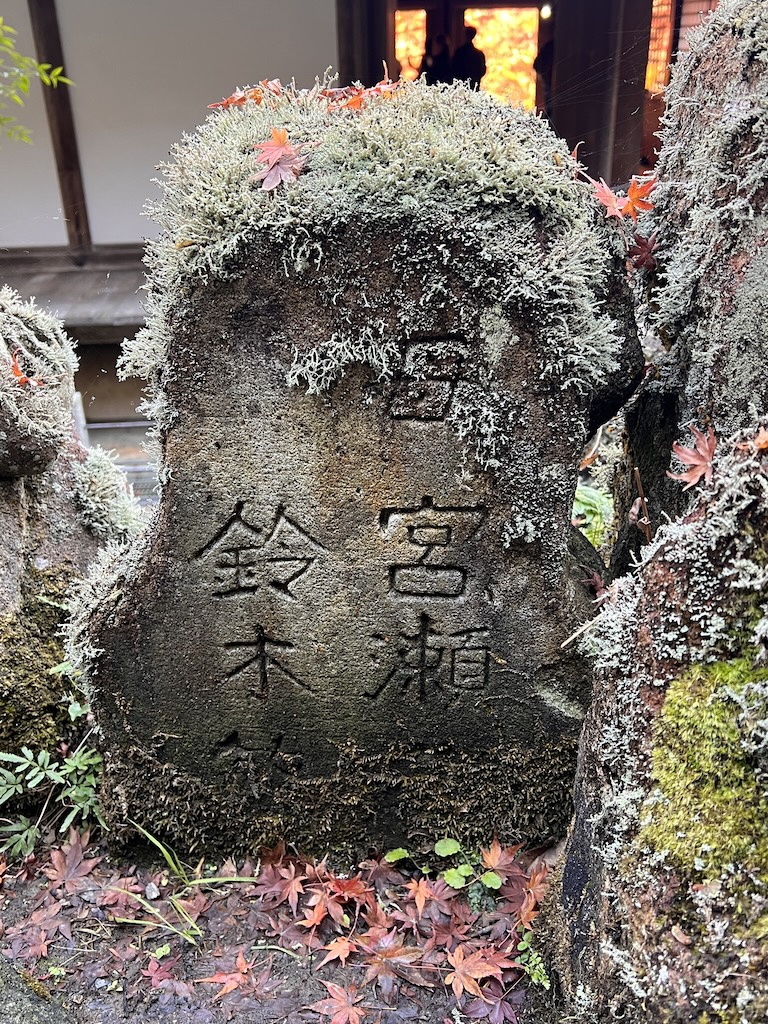
The Otagi Nenbutsu-ji Temple had roots in Tendai Buddhism.
Touring the Otagi Nenbutus-ji Temple
After seeing the Ryoan-ji Temple and the Kinkaku-ji Temple, I was momentarily troubled by the fact that I really did not have a plan for the afternoon. I had wanted to do some hiking, from Mt. Takao to Arashiyama, but my schedule did not allow that. Outside of Kinkaku-ji Temple, I decided to look for temples that are somewhat lesser known.
In many travel websites, the Otagi Nenbutsu-ji Temple is described as a hidden gem. It is certainly one of the lesser-visited temples in the Arashiyama area. I was very much drawn to the army of rakan statues there, and it turned out to be a wonderful visit.
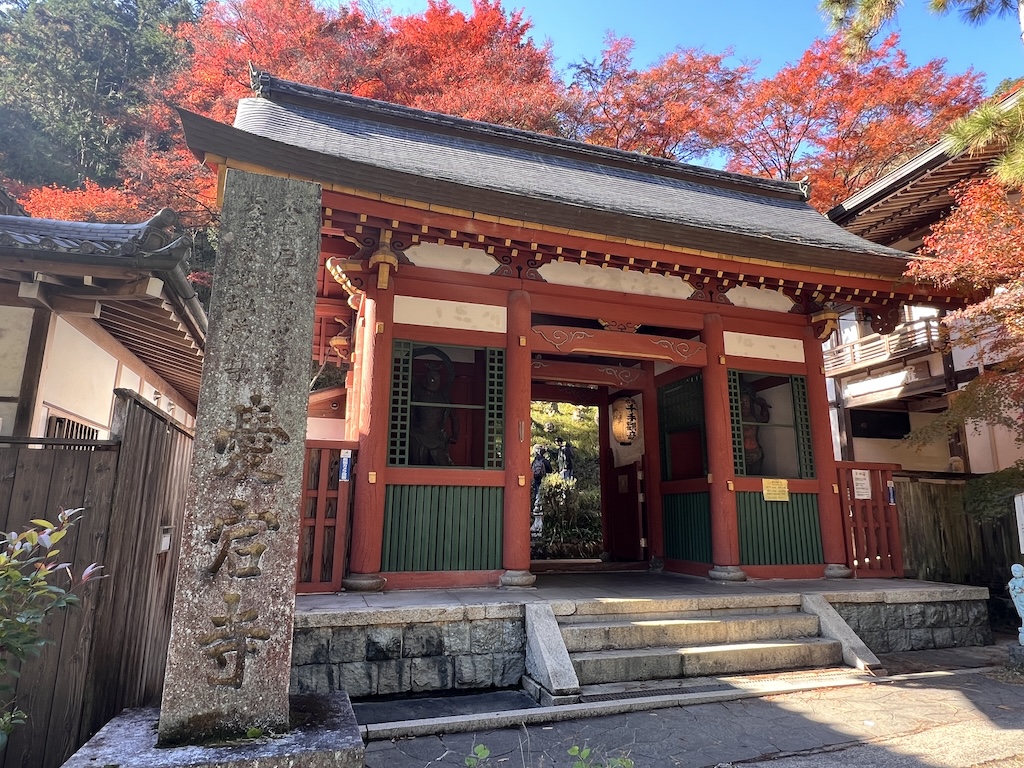
As you enter the main gate of the temple, you start seeing these statues along the inclined slope leading you to the main hall. At first glance there were more eerie than interesting, because moss has grown its spell on their faces. But behold, because you will come to face with some really humorous artwork throughout the temple grounds.
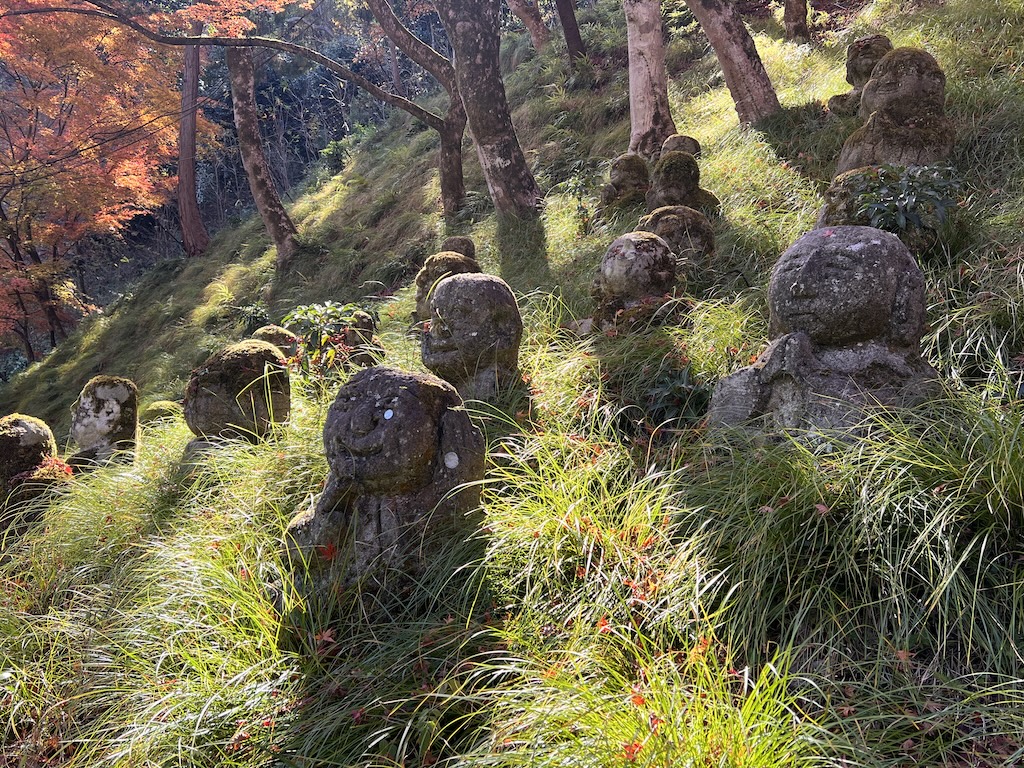
As I looked closely at these rakan statuettes, I noticed a lot of eccentricities. They brightened up my mood immediately, and I started looking for faces that reminded me of my friends as well.
The Otagi Nenbutsu-ji Temple is truly unique in this aspect. All over the hillside on which this temple stands, there are testaments of faith as expressed by the commoner Buddhist believers that sculpted these statues. Surely, time has done its work on these statues, as they are overgrown with moss, but the timelessness of these individual testaments brought forth an incredible sense of wonder. It was as if I came into an ancient choir singing a silent song of faith.
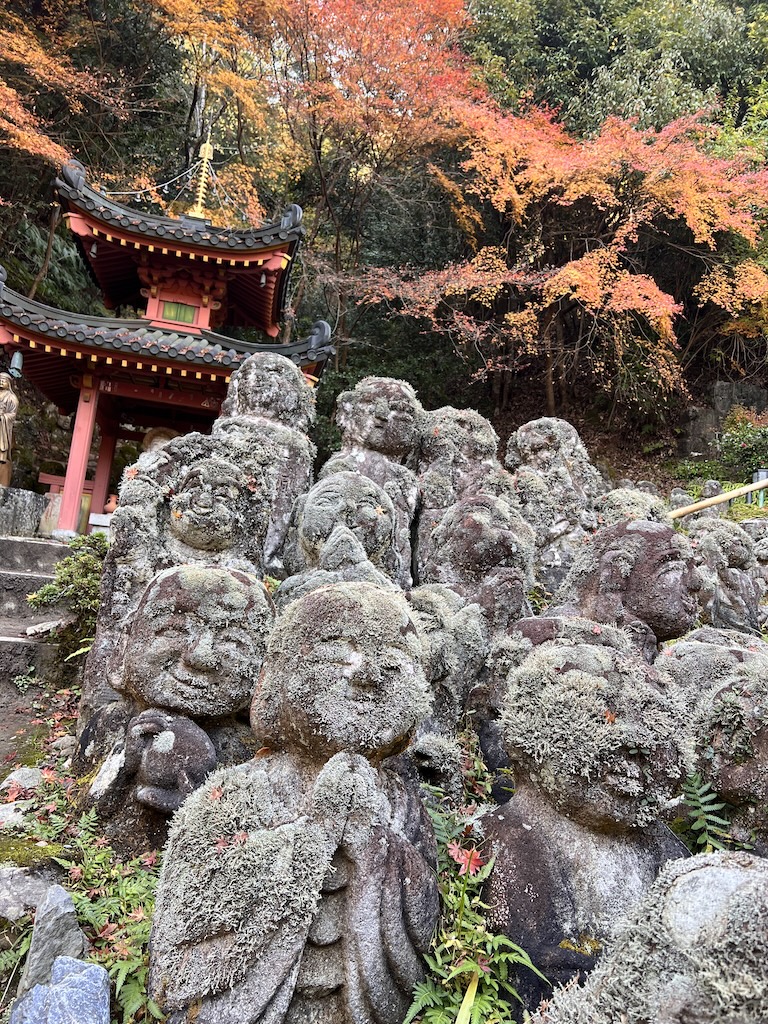
I left the Otagi Nenbutsu-ji Temple inebriated by the tickles of joy that these statues gave me.
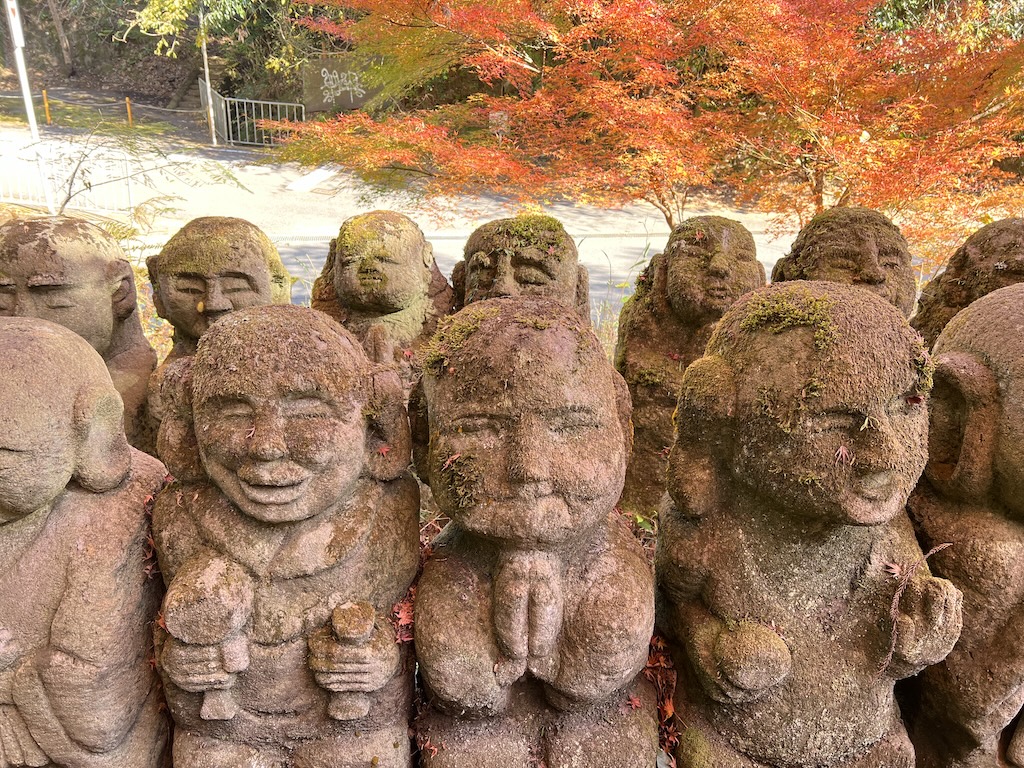
Sources
Descriptions on site at te Otagi Nenbutsu-ji Temple.
Japan Experience, Otagi Nenbutsu Temple: A Hidden Gem of Whimsical Buddhist Art in Kyoto.
The Wikipedia on Otagi Nenbutsu-ji.
